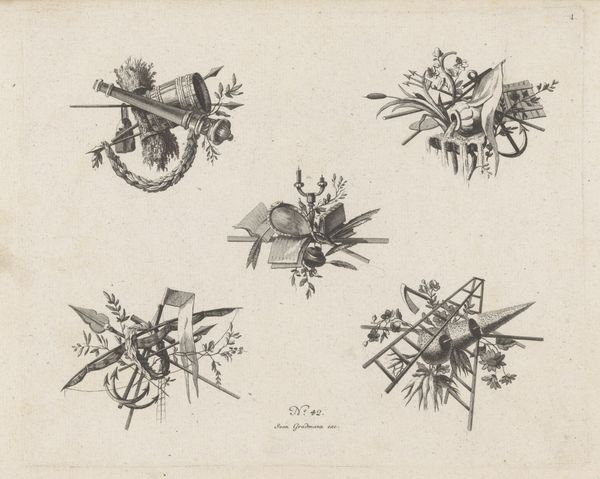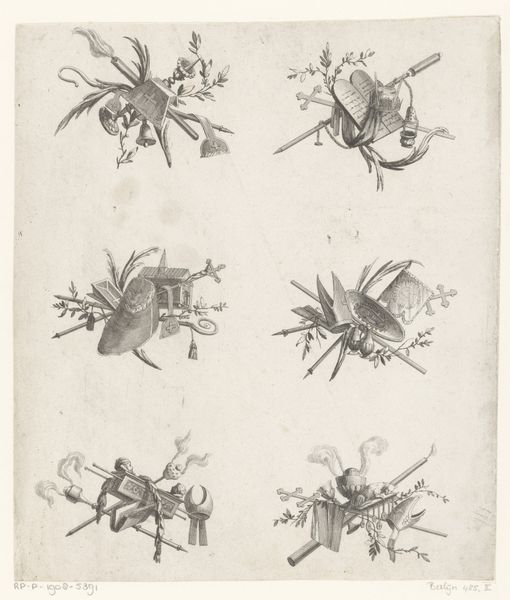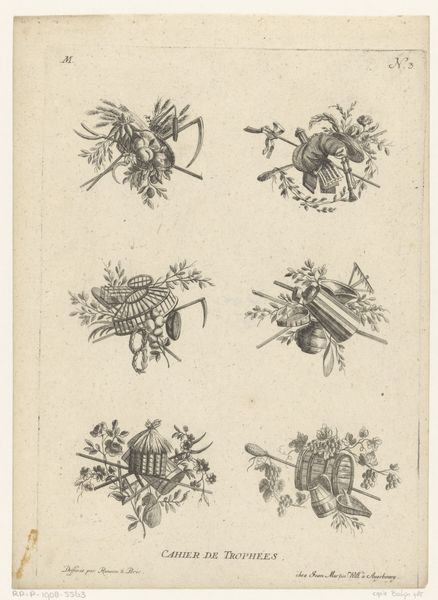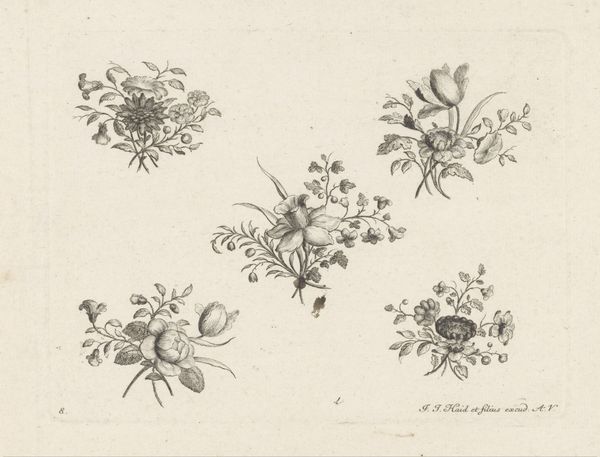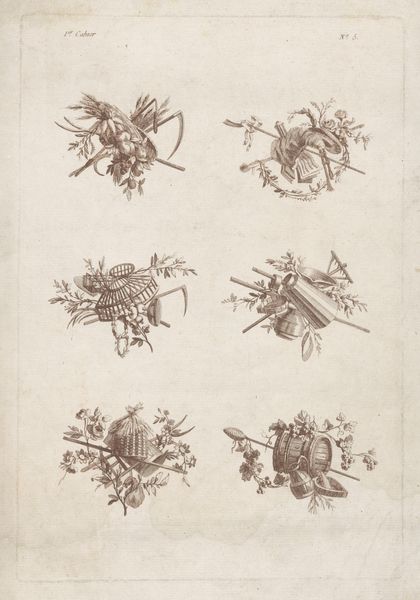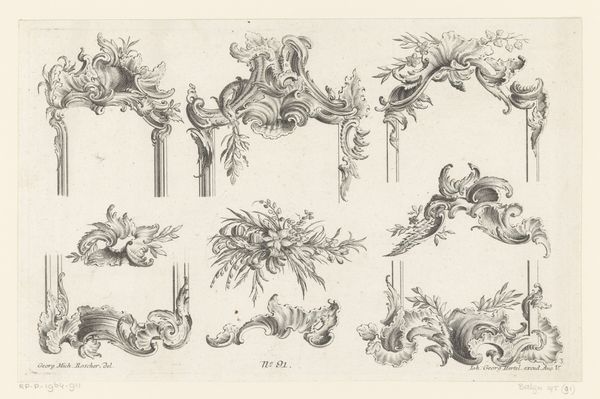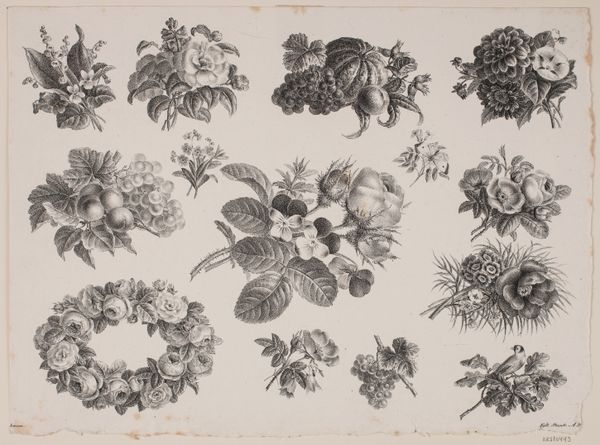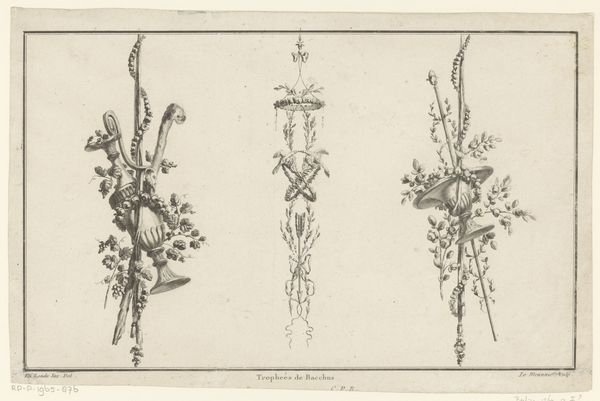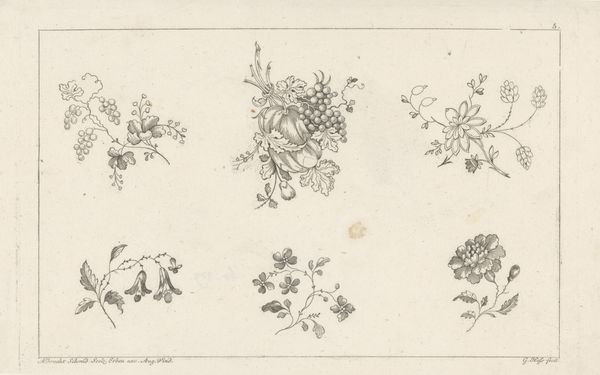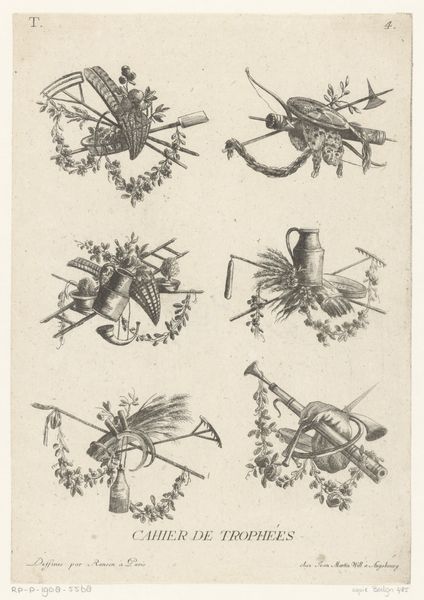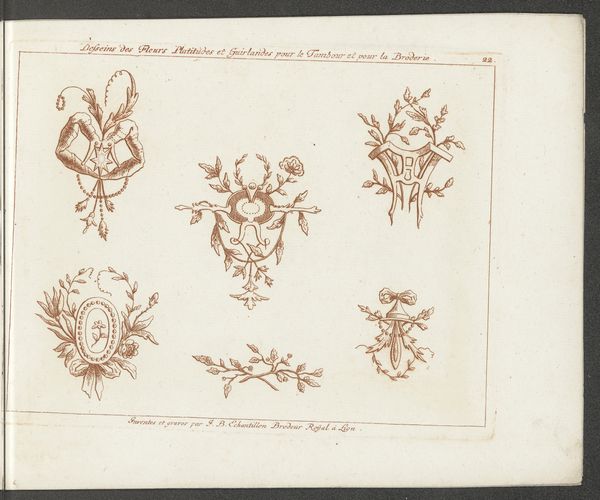
Dimensions: height 201 mm, width 247 mm
Copyright: Rijks Museum: Open Domain
Curator: Here we have "Attributen behorende bij landbouw en Bacchus," or "Attributes belonging to agriculture and Bacchus," an engraving and etching by Johann Carl Schleich, dating somewhere between 1769 and 1842. Editor: It strikes me as surprisingly joyous for something that depicts labor. The arrangements feel celebratory, almost like heraldic devices for the harvest. Curator: Yes, consider that Bacchus, or Dionysus, isn’t just the god of wine but also of fertility, theatre, and religious ecstasy. The attributes chosen by Schleich link directly to production and celebration—tools such as rakes, wheelbarrows, and baskets alongside grapes, flowers, and overflowing vessels. Editor: And they are distinctly gendered spaces aren't they? The productive aspects, such as wine making and crops, intertwine inextricably with concepts of fertility and growth that traditionally linked women with the land. This is a clear symbolic landscape rooted in early forms of capitalism. Curator: Precisely. The imagery evokes the cycles of life, of cultivation, and ultimately consumption. Looking at how they're grouped, could Schleich be subtly commenting on labor itself, depicting its fruits as not just sustenance, but as emblems of identity and societal roles? It is not straightforward Baroque ornamentation. Editor: It’s all rather skillfully balanced, isn't it? Note that even the open book is entwined with nature. Knowledge here seems wedded to cultivation, suggesting perhaps an enlightened approach to agricultural production? These combinations create compelling visual rhymes that elevate the work beyond mere decoration. Curator: I agree completely. This is more than ornamentation; Schleich offers a statement on the fundamental relationship between humanity, labor, and the bounties of the Earth. The Baroque clearly embraced its decadent potential. Editor: Exactly. Now, seeing it through this lens, it takes on a completely new and fascinating layer of meaning. The piece beautifully illustrates how deeply ingrained certain roles and images have been over the centuries.
Comments
No comments
Be the first to comment and join the conversation on the ultimate creative platform.
